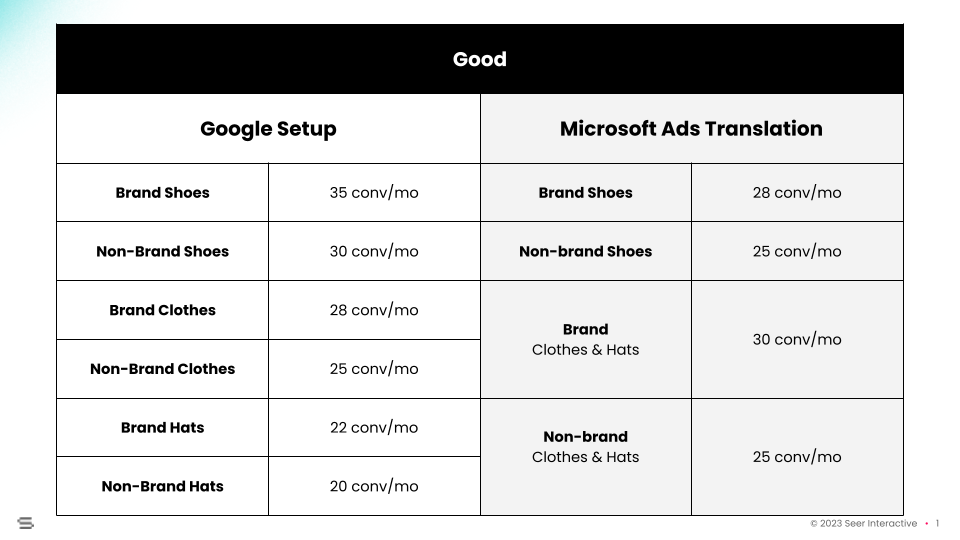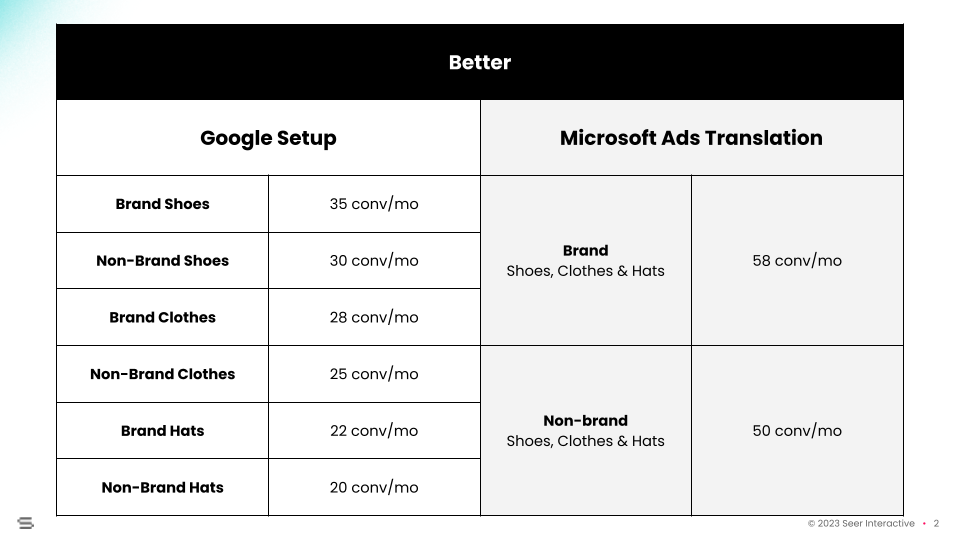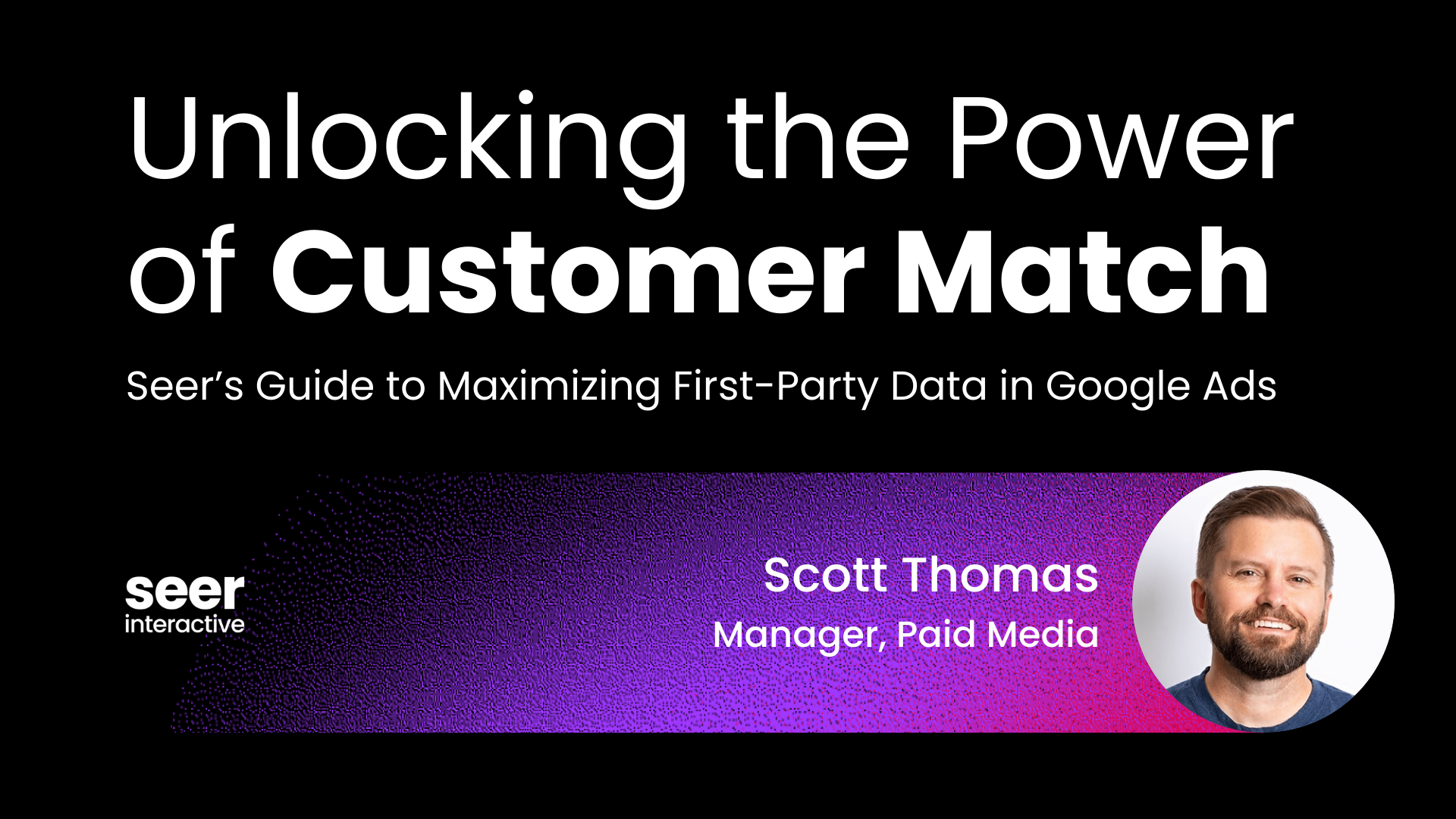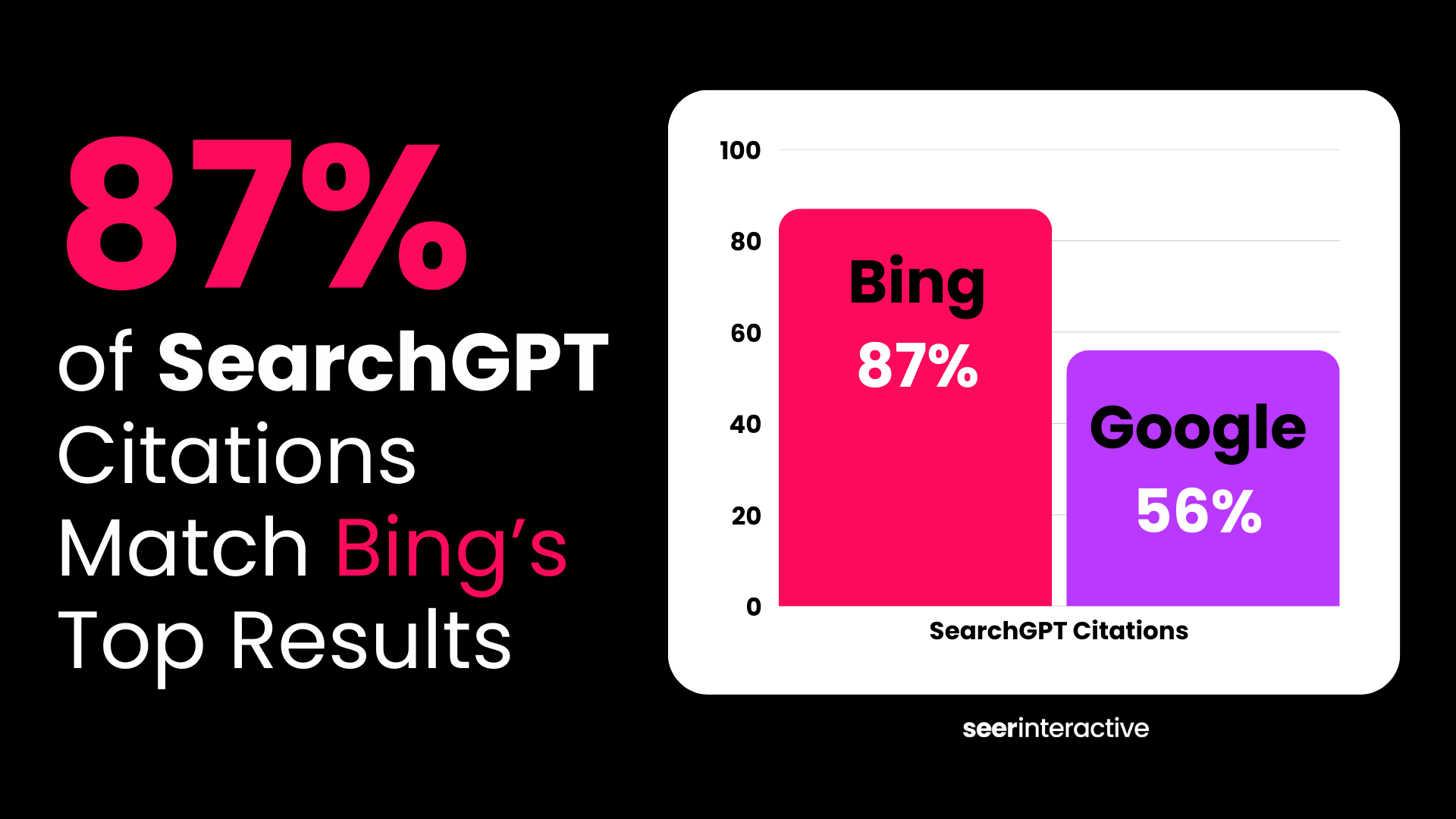We Often Get the Question, “Why Don’t My Microsoft Campaigns Convert As Well As Google?”
The reason is pretty simple - it’s because they’re different platforms. The Microsoft Ads algorithm will innately be much different from Google’s.
They're powered by different data - the volume, user experience, and audience types are not the same across both platforms.
Bing has less people searching on their platform vs. Google:
-
Microsoft's 2022 search market share PEAKED at 3.59% in October 2022
-
Google's 2022 search market share's lowest month was July 2022 at 91.46%
source: statcounter.com
Fewer searches means fewer potential conversions
A lower conversion count means you're waiting longer for Microsoft’s smart bidding to learn. And, by the way, we highly recommend leveraging smart bidding for both Google and Microsoft.
Smart bidding works by leveraging your conversion data to understand your audience; it looks at their search patterns, personas, locations, device trends and more. To make smart bidding as effective as possible, you need to feed it enough conversions so it can learn how searchers relate to your offerings. That data then creates a feedback loop that drives bid strategies like Max Conversions, Target CPA, and Target ROAS.
From our experience, it takes about 20 conversions per month, per campaign on Google Ads for the technology to become more responsive.
By more responsive, we mean that we typically see target changes (new spend thresholds, new efficiency targets, etc.) hit performance targets faster when we use this benchmark. For Microsoft Ads, they recommend at least 30 conversions in the previous 30 days (whereas Google’s Data driven attribution model requires 200 conversions within 30 days).
Fewer searches also means less user behavior feedback
As long as Microsoft is only gathering a maximum of 3.59% of search data vs Google's 91.46% per month, Google will simply always have a stronger smart bidding algorithm.
Don't give up on Microsoft Ads
Let’s recap: they’re different platforms.
So you’re probably not going to be surprised if I tell you that you’d benefit from using a different structure for your Microsoft Ads campaigns than you do for your Google Ads campaigns. One of the best ways to realize the benefits of machine learning is to consolidate your campaigns.
This improves the algorithm’s ability to quickly react to changes in your bid and/or budget targets. While a direct import from Google Ads may be the fastest way to bring in campaigns, it is not necessarily going to be the most effective for performance. That is why we sometimes recommend a different approach on Microsoft than Google.
We have 3 different ways you can maximize your Microsoft Ads campaigns through consolidation.
Swipe below to take a look at a good, better, and best sampling of how to handle that consolidation on Bing.
Maximize your Microsoft Ad Campaigns

Good: Consolidate your campaigns where it makes sense
This may look like bucketing clothes and hats together as we show below. Or for a company like Seer, it may be combining our Paid Social and Paid Media services campaigns into a single Paid Campaign in Microsoft.

Better: Consolidate campaigns to two: (1) Brand and (2) Non-brand
Take it even further and get down to just two campaigns. This type of consolidation could look like one Brand campaign and one Non-brand campaign, or even a campaign per location with combined Brand/Non-brand ad groups. Depending on your daily budget, this may be the best utilization of both your budget, and your conversion data.

Best: Consolidate your Google account first, then use Microsoft's automatic import feature
The best case scenario: this will make your entire life easier, if you let it. Microsoft’s automatic import feature will keep your campaign settings, ads, keywords and more in lockstep with your Google campaigns - simplifying the launch process.
Using the 'better' methodology from above, consolidate your Google account first, then use Microsoft’s automatic scheduled import feature to import it to Microsoft Ads on your preferred cadence.
Consolidation on Google should help the bidding algorithm to drive you better results as well. If you consolidate on Google first, and use the proper settings, that’s going to save so much time down the road. Leveraging Microsoft Ads’ import feature, every time you launch an ad group, keyword or ad it can import directly to your Microsoft campaigns! HUGE time saver.
Potential Pain Points
There are, of course, drawbacks and risks to consolidation.
For example, you may have to consider the pros and cons of keeping your Brand/Non-brand campaigns separate. If non-brand would absorb the majority of spend when consolidated, you may have to use Portfolio bidding instead of consolidation. But, if brand campaigns generally have low search volume, (contrary to popular belief) you may gain benefits from the algorithm if you consolidate with non-brand!
Additionally, you should consider the boundaries set by campaign level settings. In some examples, you might not want to consolidate traffic for certain locations or languages. Be very careful to avoid consolidating where ad copy language could cause friction in a certain location. Also, if you have separate budgets targeted for service line-specific campaigns, you will need to control those at the campaign level.
You should also be careful to avoid losing data from campaign-level reporting. If you were passing data to a CRM with the campaign name in URL parameters only, you will need a new strategy for campaign tagging before consolidation.
Lastly, it takes time to plan these consolidations. While we believe the investment is worth the time and effort, it is an investment.
Conclusion
So, there you have it: a simple reason for why Microsoft campaigns don’t often work the same as their Google counterparts -- they're different. However, with the right campaign structure and strategy Microsoft can be an integral part of a successful paid media mix.
There will likely be nuances in play that we haven’t addressed for your specific scenario. Those all have to be considered and thought through by your team when using any testing methodology.
Want more posts like this? Subscribe to the Seer Newsletter:



